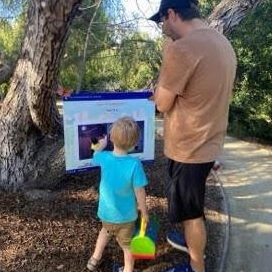Recently, there has been worldwide “hype” around brain interfaces and the seemingly endless possibilities that they provide. Despite bold predictions from several technology companies about the future of neural interfaces (e.g. Elon Musk’s whole brain interface that will allow the brain to connect to an information network), the science of brain augmentation is still in its early days. There is a large gap between what is talked about amongst the hype and what is actually feasible in the near future. Professor Arthur Lowery gave us a reality check of what applications are possible for brain interfaces; electrodes can be placed to stimulate the occipital lobe for sight, the motor cortex for the control of prosthetics, or the speech centre for artificial speech.
It has long been a popular perception that risk-taking and status-seeking have evolved as masculine traits, as there is less selective pressure for women to develop a “competitive edge” and to take risks. Professor Cordelia Fine discussed the roles of men and women in society, particularly how their behaviour contributes towards “reproductive return” – their passing on genes to offspring and continuing their ancestral line. Scholars have previously reported on links between testosterone levels and risk-taking, their argument being that where men evolved a promiscuous streak to be competitive in order to acquire or defend their status and sexual opportunities, the female strategy has been more focused on ensuring they have enough resources to care for their offspring. As Professor Fine points out, however, women can be big risk-takers in their own right.
This article from George Hook at Federation University canvasses his extensive collation of clues from historical narratives, maps and surveying techniques to limit the search area for the vantage point where von Guérard sketched the view on which he based his painting of the Kosciuszko massif. Novel use of spatial technology utilising satellite imagery, Global Positioning System (GPS) and Shuttle Radar Topography Mission (SRTM) data, particularly digital elevation models, to locate the actual site is explored, and the topographical accuracy of his sketches evaluated when compared with photographs taken from close to the site. Finally, the potential value of using spatial technology in art history field work is discussed.
This Deakin University study raises concern for the reproductive success of woodland birds in Box-Ironbark forests of Central Victoria. Box-Ironbark forest is of high conservation significance, with its component tree species providing year-round flowering, and thus food resources for many species of birds and animals. Many bird species, including the endangered Regent Honeyeater (Anthochaera phrygia), are more abundant in Box-Ironbark than elsewhere. However, these forests in Central Victoria have become highly fragmented and structurally degraded, due primarily to the history of gold exploration and habitat clearance in the region. The study suggests that a consequence of this may be a greater abundance and widespread distribution of generalist egg predators throughout the region.
It’s NAIDOC Week, and what better time to reflect on the significance of the world’s oldest continuous cultures and the incredibly complex knowledge systems that have been sustained through the remarkable practice of “orality?” Dr Duane Hamacher and Krystal de Napoli from Monash University have delivered a number of terrific lectures for audiences across Victoria this year for the Inspiring Australia program, and we’ve prepared these highlights from Duane’s presentation to the Royal Society of Victoria in February to share his passion for the science traditionally encoded in story, song, dance, landscape and skyscape by Aboriginal and Torres Strait Islander peoples in Australia.






